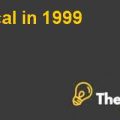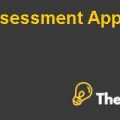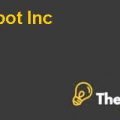Question 01: What challenges did Pepsi face in the early 1990s? How did these challenges shape the agenda and tasks of Craig Weatherup?
As the case states, the major challenge for Pepsi in the early 1990 s was that it was facing severe competition from the rival brands in the market. Moreover, Cola’s growth during the period was softening and the sales were declining.
Along with this, substitute products and alternatives for Cola were gaining hype in the market. For instance, bottled water, ready to drink tea, juices were becoming rather more famous. Rival brands in the cola industry were also a major threat for the Pepsi Company in the early 1990s.
The challenge within the industry were quite rigid and the CEO of the company Weatherup where the management decided to distribute the beverage to large restaurants such as McDonalds. Since the company had reduced the prices; therefore the CEO estimated a decline of 5% to 10% in the overall annual profits.
Moreover, based on the current challenges of the 1990s, the CEO Craig Weatherup worked upon an aggressive acquisition campaign where the company started distributing 51% of the soft drinks itself and an additional percentage of 16 % through franchise system. This was the sudden move which the CEO of Pepsi took to actually overcome the intense competition in the beverage industry.
Question 02: How did Weatherup gain buy-in and acceptance of his approach: - from his direct reports? - From the organization as a whole?
The CEO of Pepsi Weatherup gained in the acceptance of his direct reports by presenting all his findings to the 10 direct reports in the year 1990. He named the meeting as “soul searching session” where his primary objective was to basically look to convince his management team of the change that is quite inevitable.
Basically, he wanted all his direct reports to be on the same page where all the decision where made with consent of all the direct reports. He rather explained each and every direct report about the consequences of not adapting to the change and even discussed the benefits of reorganization.
Pepsi’s Regeneration, 1990-93 Case Solution
He even discussed the different metaphors and also explained each and every direct report about the possible decline in the sales of the company. He described the financial, customer, and organizational pain facing the organization, concluding the session with his “freight train” speech: “There has been a freight train out there in the market, and it is therefore called 15% earnings. We at the moment are standing on the track, and we need to eventually figure out something or it will run us right over.”
Question 03: What is your evaluation of the reorganization? Would you want the job of Market Unit manager? Why or why not?
The overall process change or the regeneration that took place at Pepsi was a rather effective one. Currently, the company has actually been more customers centric. The overall system has improved towards the betterment and the company has diversified itself from being over reliant on cola drinks. With the reorganization, Pepsi has become a diverse portfolio where the company sells all kinds of beverages.
The job of market unit manager is quite a tough one. The reason is simple; the job is of quite enormous responsibility. The individual has to look after all the activities, each customer, look after all the personal issues, employee issues and even the natural or the uncontrollable issues such as the hurricane and earthquake.
Despite the fact, I would still like to take up the job of the market unit manager. The reason is simple, given the responsibility brings the best out of the individual. However, I would like to select a team of individuals whom I can rely and convey my message too. Nonetheless, the job of Market Unit Manager in spite being tough is a challenging one and can bring the best out of the individual.
Question 04: What were the major steps in Pepsi’s change process? Do you agree with the way events were sequenced? Why or why not?
The major steps in Pepsi’s change process were the fact that under the change management or the reorganization process, the company did not focus on cola as a major source of revenue; in fact it also invested on alternative drinks. Moreover, previously the decisions were made by the higher authorities, today the market unit manager has the decision making power.
Furthermore, the company focused on becoming a customer centric firm under the change process. The organization has become more decentralized organizational structure and the chain of command has been handed over to the employees. The company focuses on satisfying customer needs rather than geographic complications..................
This is just a sample partial case solution. Please place the order on the website to order your own originally done case solution.












